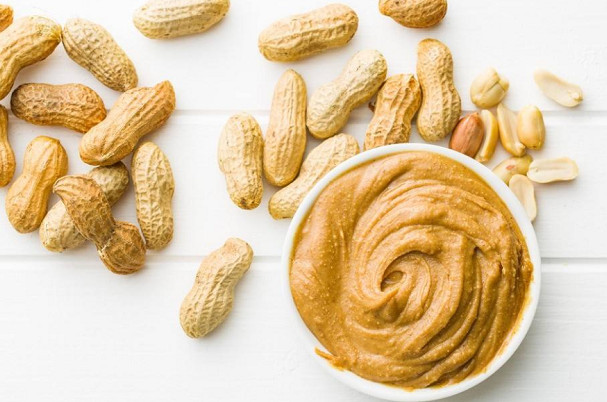Peanut Deep Processing Research (2)

Separation of peanut protein production. The separation of peanut protein is the same as the separation of soybeans. It uses the principle that the protein is dissolved in an alkaline solution, and the macromolecules such as fibers that cannot be dissolved in the alkaline liquid are removed, and then the protein of the isoelectric point has a characteristic of condensation. The soluble small molecules such as sugar are removed, and the final product contains more than 90% protein.
Peanut food microwave drying mechanical processing technology.
Low-fat peanut kernels, low-fat peanuts have the same shape and appearance, but they contain 20%-30% oil. It is made by separating the oil from the peanuts after high pressure. The resulting degreased products are divided into two types, one is high-grade peanut oil and the other is low-fat peanut kernel. Need to control at 15-40 MPa, the processing volume is 0-100kg / time, also note that the processing time is 30-60 min.
A notable feature of this method is that the peanut kernels after oil extraction can also be sold as commodities, and can also be processed with other products. In addition, treatment at room temperature ensures that nutrients are not lost.
New peanut butter, peanut butter can also be made from peanut butter making machine by using full-fat peanuts. Full-fat peanuts contain a high amount of oil. In this case, it is necessary to degrease to make peanut butter.
Nowadays, the new type of peanut butter is generally processed from new raw materials and new formulas to improve the protein of peanut seeds. The appearance is similar to traditional peanut butter. The main secret is that the raw material is defatted peanuts. However, there are great differences in nutrients. The content of new peanut butter and traditional peanut butter is 20%-35% and 40%, respectively. However, the protein content of the new peanut butter has increased by 15%, and a part of the carbon is added. The most significant advantage of the compound is that the heat is greatly reduced.
Salty peanuts and salty peanuts are also known as salt and pepper peanuts. They are made in two ways, namely baking and frying. But pay attention to the quality of peanut kernels to choose high quality.
Its production process mainly includes peanut kernels → peeling seed → color selection → oil pressing (or baking) → cooling → coating → salt and antioxidant → sealed packaging → finished product. Salty peanuts are unique in color and light in color. They contain 1.25% salt, no microbes, no rancid taste, and a shelf life of up to 6 months. In recent years, low-fat foods have become the development trend of the market, the taste is better, softer, sweeter, and the preservation time is longer.
For the new peanut milk, the following methods should be used to make the peanut emulsion: First, the peanut powder and water are blended in a ratio of 1:10, then the mixture is stirred vigorously to form the emulsion, and finally heated, and the temperature rises to 65-88 °C. Maintain homogenization for 15-20 min to maintain the stability of the emulsion. In addition, the addition of some alkaline additives such as disodium phosphate or baking soda can keep small particles floating.
At the same time, the addition of disodium phosphate with a total mass of 1.0%-1.2% is sufficient to obtain satisfactory results. To increase the smoothness of the emulsion flow, 20%-30% refined peanut oil can be added thereto. This peanut emulsion has the following characteristics: first, high nutrition, high absorption; second, it contains all the characteristics of dairy products and corn starch; third, it provides raw materials for the development of new beverages; fourth, this The emulsion product is a novel, stable and free-flowing peanut powder emulsion product.
The continuous development of peanut processing technology has promoted the growing of peanuts in China, and has also increased the overall yield of peanuts in China, which provides stable raw materials for peanut processing in China. This paper mainly describes the deep processing technology of peanuts, mainly analyzes peanut oil processing technology, peanut protein processing technology, peanut food processing technology, and hopes to give positive reference to peanut deep processing technology.